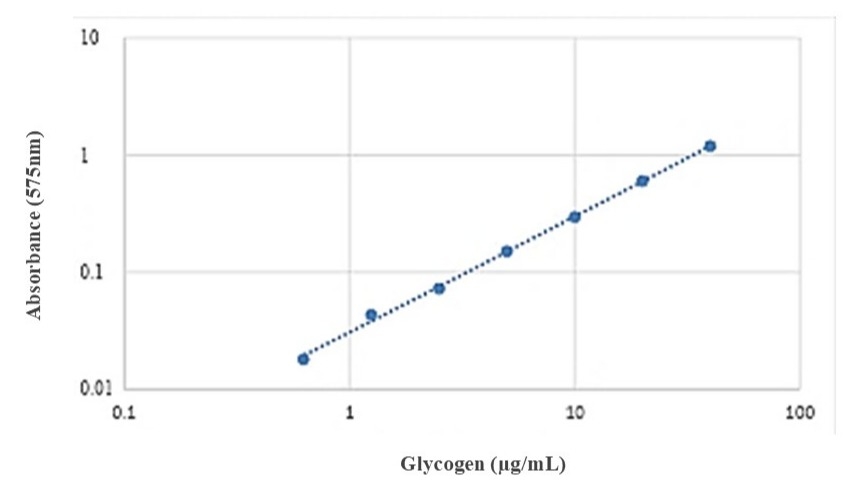Amplite® Colorimetric Glycogen Assay Kit
Red Color
The Amplite® Colorimetric Glycogen Assay Kit offers a fast, convenient, and sensitive method for quantifying glycogen in biological samples.
- Sensitive detection: Capable of measuring low glycogen concentrations in diverse biological samples
- Simple mix-and-read format: Minimal hands-on time, compatible with standard absorbance microplate readers
- Broad applicability: Suitable for cell lysates, tissue homogenates, and enzyme activity monitoring
- Comparable alternative: Offers a reliable solution similar to Abcam's glycogen assay kit


| Catalog | Size | Price | Quantity |
|---|---|---|---|
| 40013 | 100 Tests | Price |
Storage, safety and handling
| H-phrase | H303, H313, H333 |
| Hazard symbol | XN |
| Intended use | Research Use Only (RUO) |
| R-phrase | R20, R21, R22 |
Instrument settings
| Absorbance microplate reader | |
| Absorbance | 575 nm |
| Recommended plate | 96-well clear bottom white microplate |
Contact us
| Telephone | |
| Fax | |
| sales@aatbio.com | |
| International | See distributors |
| Bulk request | Inquire |
| Custom size | Inquire |
| Technical Support | Contact us |
| Request quotation | Request |
| Purchase order | Send to sales@aatbio.com |
| Shipping | Standard overnight for United States, inquire for international |
Page updated on January 2, 2026
